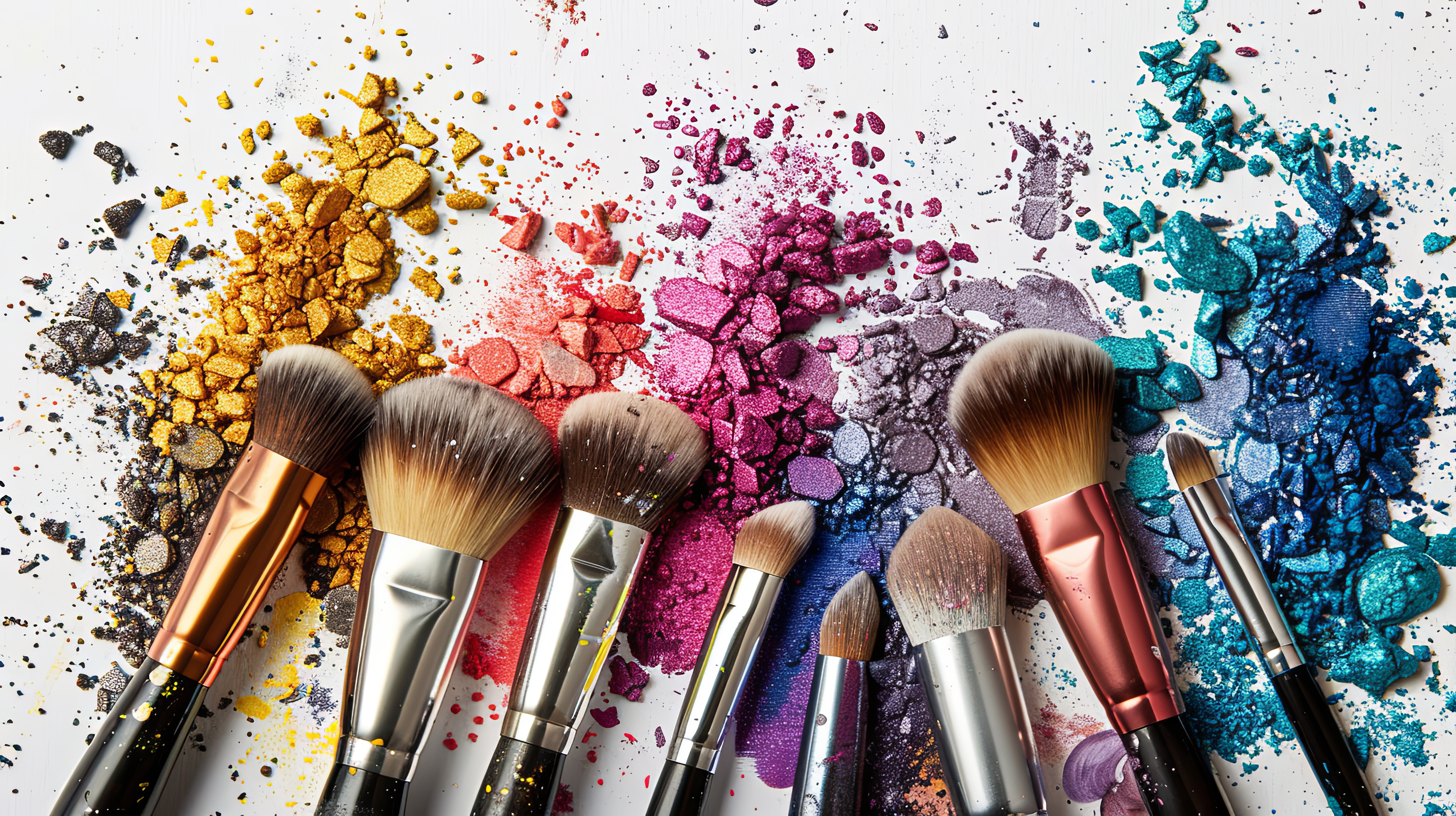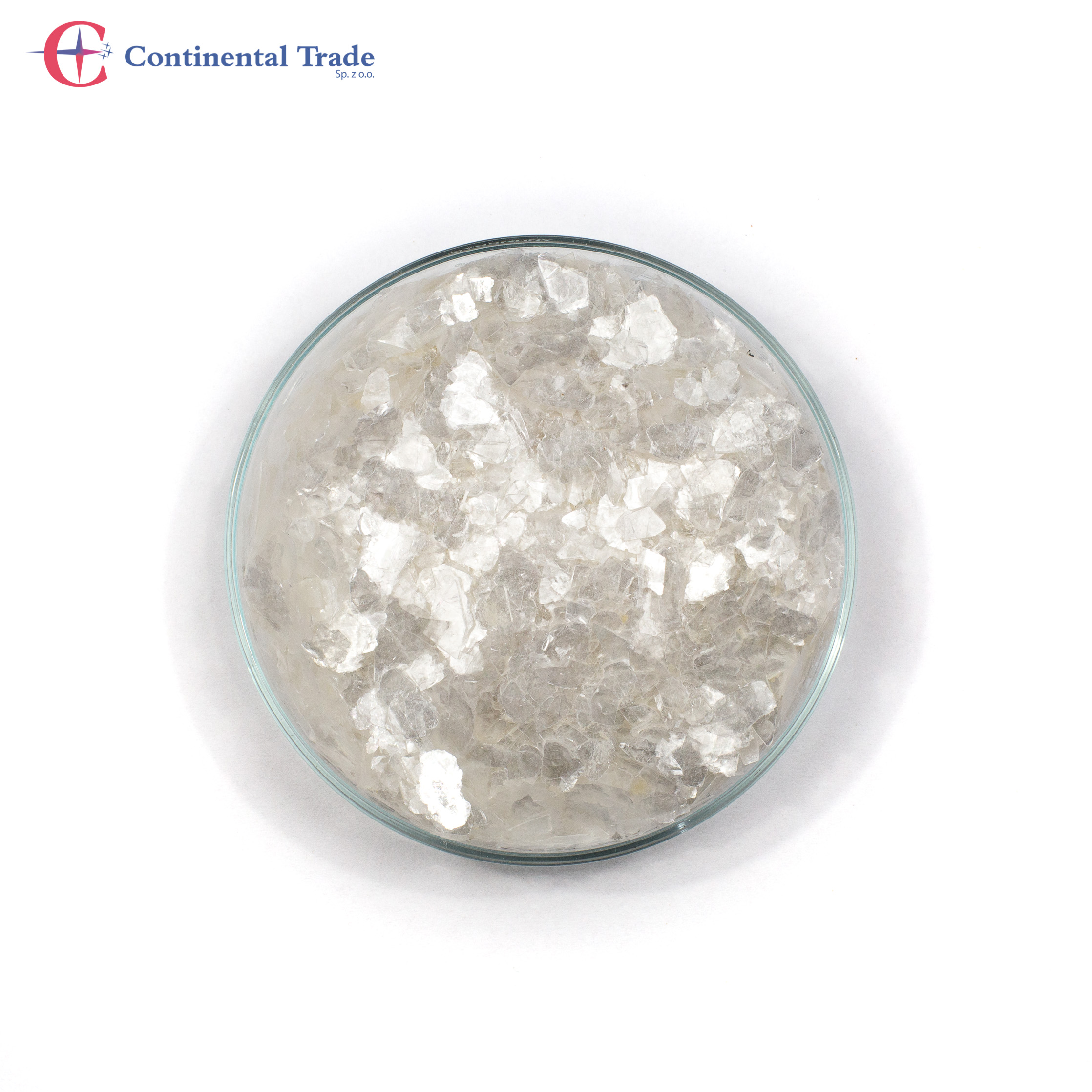Mica in cosmetics - get to know the mineral used as a pigment
Mica is one of the most versatile and valued minerals used in the cosmetics industry. Its extraordinary optical properties, natural origin and wide range of applications make it valuable when it comes to creating makeup and skincare products.
We will take a closer look at this mineral to answer the questions of what mica is, how it is formed, what uses it has and in which cosmetics it can be found.
Types of pigments – from natural to synthetic
Pigments used in cosmetics can be divided into several basic groups. The most important distinction is between natural pigments and synthetic pigments. Natural pigments come from minerals, plants, and sometimes even animal organisms (e.g. carmine). Synthetic pigments, on the other hand, are created in laboratory conditions, are more durable, and their color is more intense.
Among natural pigments, mica occupies a special place – a mineral that is used to create so-called pearl pigments and metallic pigments that give products a luxurious finish.
In addition to mica, other minerals are also used in cosmetics, such as iron oxides (for earthy colors), titanium dioxide (whitening effect) or ultramarine (blue shades). The types of pigments are therefore extremely diverse and each of them has a specific function - from giving color to sun protection.
Mica pigment – how is it made and how does it work?
Mica pigment is a combination of natural mica with additional coloring ingredients, such as iron oxides, chromium or manganese. Mica itself is transparent or slightly pearly. It is only by adding dyes that you can obtain different colors - from delicate pastels to intense metallic tones.

The mica pigment production process begins with the extraction of the raw material, which is then purified, dried and crushed. The mica prepared in this way for cosmetics can be used in various formulas: in loose eyeshadows, pressed powders, creamy lipsticks or lip glosses.
At the same time, mica pigment is very well tolerated by the skin. It does not cause irritation, does not clog pores and is safe even for sensitive skin. It works perfectly in cosmetics intended for allergy sufferers and in mineral makeup.
Origin and properties of mica
Mica is a natural mineral that occurs in nature in the form of thin, shiny flakes. It is mined in various regions of the world, including India, the United States, China and Brazil. This raw material is then processed further, so it can be used in many industries - including cosmetics. In this industry, too, more and more attention is being paid to responsible sourcing of ingredients. That is why many companies decide to cooperate with suppliers offering pearl mica from verified and certified sources, focusing on transparency and product quality.
The properties of mica are unique: this mineral reflects light, helps optically smooth the skin, masks minor imperfections and gives the complexion a radiant appearance. For this reason, mica plays an important role in cosmetics, especially in illuminating, mattifying and corrective products.
Mica — what cosmetics can we find this ingredient in?

Wondering which cosmetics contain mica the most? Here are the most popular products on drugstore and pharmacy shelves:
Eye shadows – give a pearly or metallic shine.
Illuminators – create a glow or sheen effect on the skin.
Mineral powders and foundations – improve skin structure.
Lipsticks and glosses – add volume and shine to the lips.
Nail polishes – especially those with a holographic or pearl finish.
Body cosmetics – e.g. balms with a brightening effect.
Thanks to its versatility, mica dye is used not only in makeup cosmetics, but also in skin care products, e.g. in BB creams or beauty masks.
Pearl pigment and metallic pigment – the “ wow ” effect in makeup
Pearl pigment, created on the basis of mica, gives a delicate, subtle glow resembling the natural shine of the skin. It is often used in illuminating cosmetics, because it reflects light, giving the face a youthful appearance.
In turn, metallic pigment is a more intense version of pigment – used primarily in strong evening make-up. It gives the effect of a metal sheet on the eyelid or lips and thanks to mica it looks very effective and is durable.
Cosmetic Pigment – How to Choose the Right One for Your Product?
The choice of pigment for a cosmetic depends on the effect you want to achieve. For a subtle glow, choose a pearl pigment based on mica. If you want a strong, mirror finish, a metallic pigment will be ideal. For everyday cosmetics, natural pigments are best - they are delicate, well-tolerated and less allergenic.
When making DIY cosmetics, it is worth investing in high-quality mica pigments that are easy to use, spread well, and have a wide range of colors. They are available in both warm and cool shades, so you can combine them and create unique color compositions.
Not Just for Makeup – Where Else Are Mica Pigments Used?
Mica pigments are used in many industries and products, not just in cosmetology. They can be found in food packaging, toys, cosmetic containers, floor panels and home appliances.
Mica pigments are also used in the automotive industry – they are used in car paints, as well as in decorating objects made of plastics, leather (both natural and synthetic) and fabrics. They are also suitable for printing and dyeing textile materials. They are used in the production of cardboard packaging, business cards, greeting cards, wallpaper, foils and decorative panels.
Due to their unique structure, mica pigments are perfect for the production of varnishes and paints, e.g. with a pearl shine, changing color under the influence of the angle of incidence of light or a delicate, satin shine. They are used in paints intended for cars, in cosmetics for paint care and for decorative purposes.
In the printing industry, mica pigments enable modern effects – from holographic to three-dimensional. Such solutions attract attention and beautify packaging or labels.
Although mica is most often mentioned in the context of cosmetics, mica-based paint pigment is also very popular – especially in painting, candle production, and handicrafts. Adding mica to paints gives them depth, shine, and a 3D effect. It is used in pouring techniques , resin art, and interior decoration.
Mica pigments provide depth of colour and attractive, decorative finishes in a wide range of products. However, when using them – especially in cosmetics – it is essential to strictly comply with applicable safety regulations and standards to ensure consumer health protection.
This shows how versatile mica is – not only as a cosmetic pigment, but also as an artistic dye that creates interesting visual effects. Want to see what professional mica pigments look like? Check out the mica pigment on our website, where you will find a range of pearl, metallic and natural pigments.
Mica Pigment Summary
Thanks to mica in cosmetics, makeup gains shine, the skin looks healthier, and products become more pleasant to use. However, it is important to choose cosmetics with mica from legal sources and high quality. The quality of this raw material is of great importance, because it affects not only the appearance of the finished product, but also its durability, ease of application and safety for the skin. Finely ground, well-cleaned mica with a uniform structure gives a more elegant effect and integrates better with the other ingredients of the formula. This is especially important in the case of cosmetics intended for the face. They serve not only an aesthetic finish, but above all they must be delicate.
It is worth choosing products from brands that use mica from proven sources and care about the quality of the entire production chain. Only then can you be sure that the cosmetics you reach for will not only be beautiful, but also created with care for standards.




